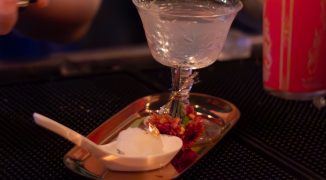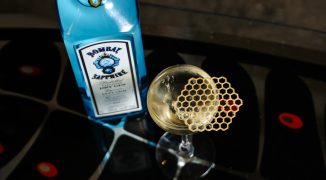Syrups, bitters, shrubs — the world of housemade cocktail ingredients is constantly expanding. But that growth can create new problems, like finding storage space for new concoctions, ensuring quality control and, most troublingly, wasting product and money if it spoils. Luckily, you don’t even have to worry about some ingredients, and certain others are easy to modify to maximize viability. To help you navigate this world, we’ve rounded up background information and tips to preserve four common housemade ingredients.
1. Syrups
Syrups are one of the easiest (and cost effective) ways bartenders and cocktail aficionados can add a personal touch to every cocktail. At their simplest — pun intended — syrups are humble mixtures of sugar and water.
According to Camper English of Alcademics, the shelf life of simple syrup can be lengthened two ways: upping the ratio of sugar to water, or adding neutral spirit.
The difference is surprising. Simple syrup (1:1 ratio of sugar to water) will only stay good for about a month. But rich simple syrup, made from a 2:1 ratio of sugar to water, will last about six months before becoming cloudy.
If you’d prefer to make huge batches to use for months on end, learning how to bottle in a vacuum may be the method you’d prefer. After all, “bacteria can’t multiply without air,” says Jennifer Colliau, owner and operator of Small Hand Foods. “Once you open a jar and expose the food to air, bacteria can feed.”
2. Shrubs
Preserving fruit in liquid form by mixing it with vinegar and sugar has been done since colonial days. Like pickled vegetables, you’re very likely to use all of it before it spoils. “Theoretically speaking, you could have a shrub that you make and leave it on your countertop for over a year or more and the shrub won’t rot or spoil,” says spirits journalist and author of “Shrubs,” Michael Dietsch. “The worst that will happen to it is that the flavors degrade over time.”
Pickling is just really, really effective, says Julian Goglia, partner and beverage manager for Atlanta’s The Mercury, The Pinewood and Proof. “Anything that you preserve in that particular manner is going to last really well,” says Goglia. “You’re using the process of pickling to make some sort of fruit last pretty much indefinitely. I’ve noticed after a week or two everything that we’ve ever preserved tasted better, but after that point, it pretty much stays the same.”
The incredible shelf life stems from the natural antimicrobial properties of vinegar, and to a lesser extent, sugar, says Dietsch. Thanks to these ingredients, the perishable fruit in the mix tends not to spoil. “If you’ve had it around for a while and you’re curious about it, open it up, check it for mold, give it the sniff test — see if it still smells like fruit and vinegar,” he says. “If it still smells fine, if it still looks fine, then it’s almost certainly fine and you won’t have any problems with it.”
But there’s a catch: the product’s natural makeup means that there’s not necessarily a way to stretch its life. “I suppose you could borrow the trick that some people [use] for simple syrups and add a bit of high proof vodka,” says Dietsch. “But I think the vinegar’s going to kill everything the vodka would, so I’m not sure it would help that much.”
3. Bitters
Though bitters are basically highly concentrated herbal infusions, the burgeoning number of bars (and houses) with housemade bitters wins them their own place. Like other infusions, they’re made by steeping ingredients in alcohol. “The alcohol will kill almost anything that might be living on the stuff,” says Dietsch. “A lot of homemade bitters tend to be pretty high proof. The fact that they’re made with alcohol means that they’re probably going to last a long time.”
Goglia agrees, but cautions against leaving them in places where they will be exposed to sunlight or fluctuations in temperature. “If you can control those variances, there will be much less change over a period of time,” he says. “[The more] you can control those, the more you can preserve the flavors. It’s still the exact same product, but over time, it’s going to degrade in some way. I still have bitters that I made before we opened Pinewood. They’re four-and-a-half years old and they’re still good, and they taste similar to how they did back in the day.”
4. Infusions
Infusions have been in vogue since before the craft cocktail movement. Fruit or pepper vodka were some of the most common, and others have since risen to popularity. Despite their fruit content, these infusions are alcohol-based, and as a result tend to be quite stable.
Like shrubs, “you’ll probably use them up before you have to worry about them going bad,” says Dietsch. “If you’re infusing in a really high-proof medium [like] Everclear, you’re probably going to be okay. If you’re putting something into an 80 proof brandy, you may want to check on it after a few months to make sure it’s okay.” To check it out, do periodic taste tests, sniff tests and visually inspect for any changes.




